Deciding which brand suits the shelf of our kitchen between GreenPan and HexClad is difficult, but it’s not an impossible task. To make things easier, I’m here along with this guide to help you understand the difference between GreenPan and HexClad.
I’ll share my extensive research about both brands and their 8 main differences in variety, cookware collection, design, quality and performance. This will help you make an informed decision about the cookware. So, let’s get into the details!
Quick Overview
| Features | GreenPan | HexClad |
| Cookware Collections | Offers 15+ collections and colorful sets | Has a single HexClad Hybrid collection |
| Material Variety | Offers various materials: stainless steel, non-stick, hard-anodized aluminum, forged aluminum | Limited to stainless steel |
| Cookware Construction | 3-ply and 5-ply options available | Only 3-ply construction |
| Non-stick coated | Yes | Yes |
| Cooking Performance | Recommended for low to medium heat | Suitable for low to high heat |
| Oven Compatible | Yes (300°F to 600°F) | Yes (400°F to 500°F) |
| Induction Compatible | Yes, but not all collections | Yes |
| Price | Affordable | Expensive |
| Downsides | Ceramic non-stick coating isn’t as strong as HexCladThe quality is good but not compared to the HexClad cookware | Expensive Only one cookware collection |
Differences Between GreenPan and HexClad
Here are the top main differences between the GreenPan and HexClad brands. Make sure to read till the end to make the best decision for your kitchen.
Cookware Collections
The most prominent difference between the GreenPan and HexClad brands is in the cookware collections. GreenPan has about 15+ cookware lineups, and HexClad has only one collection: the HexClad hybrid; here’s the image of it:

You can see the image above, and this is the only option you’ve with HexClad. Either you can go with HexClad cookware sets consisting of different numbers of pieces or buy pans and pots separately, but remember everything will be from the same collection.
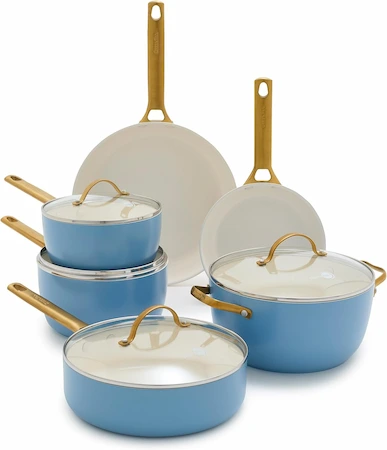
In contrast to HexClad, the GreenPan brand offers an extensive variety. You don’t only have the option to pick cookware from different collections, but you can also go with the colored cookware sets. GreenPan has cookware in different colors like red, blue, yellow, pink, gray etc.
Size & Variety
Another main difference I’ve noticed is between the sizes of pans and pots and the overall variety in the material. As I said, HexClad has only one collection; they’re offering many cookware sets consisting of specific pieces of skillets, but they all are from the same Hybrid collection.
This Hybrid collection of HexClad consists of stainless steel cookware; that’s all the variety you have. However, GreenPan has cookware in stainless steel, hard-anodized aluminum, forged aluminum, and non-stick.
Cookware Construction
When it comes to cookware construction again, the winner here is GreenPan. The HexClad Hybrid cookware collection is based on a 3-ply construction, which means it has one layer of aluminum between the two layers of stainless steel.
On the other hand, GreenPan not only has 3-ply cookware but also 5-ply cookware sets like GP5 Stainless Steel. It may seem like a minor difference, but it means a lot, especially to cooking enthusiasts.

3-ply and 5-ply cookware are better in terms of heat conduction as they have an aluminum core. The difference is that 3-ply cookware has only one aluminum layer, and 5-ply cookware has three aluminum layers, which makes it better at retaining heat and providing it consistently.
Design of Cookware
The HexClad and GreenPan both have major differences in their design. To show the complexity of differences, here’s a brief breakdown of HexClad Hybrid stainless steel and GreenPan Tri-Clad stainless steel pan.
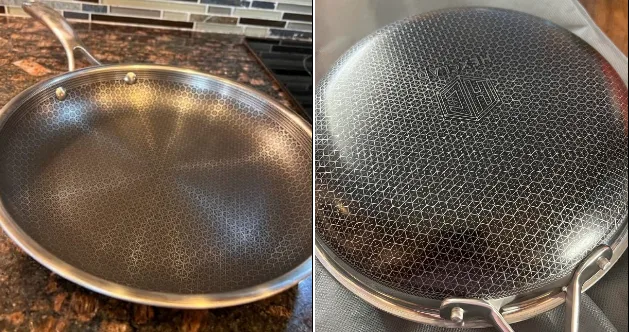
As shown in the images above, the HexClad pan has a hexagonal design all over the surface and the base of the pan. At the same time, the GreenPan tri-ply stainless steel pan has nothing like that. GreenPan pan features a smooth surface and the bottom.
Another difference is in the handle. Although both brands offer cool touch handles with comfortable grip, I find the handles of HexClad cookware more comfortable.
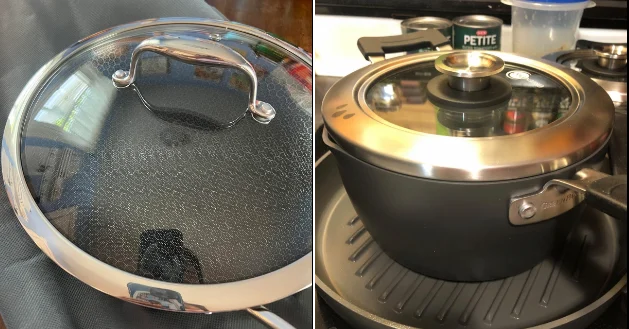
The design of the HexClad cookware lid is made of tempered glass like many GreenPan cookware, but there’s a catch. GreenPan brand has more variety in lids than HexClad. You can easily find tempered glass, stainless steel, or lids made with both materials in Greenspan collections.
Non-Stick Coating
One of the biggest questions that concern customers is whether HexClad or GreenPan non-stick ceramic coating is better.
According to my experience, HexClad non-stick coated cookware is top-notch when compared to GreenPan ceramic non-stick-coated cookware.
The reason is shown in the images below; you can see the smooth, shiny surface of a normal non-stick-coated pan. It’s good for cooking; however, there will be scratches if you use a metal spatula on it.

At the same time, there’s no such thing with HexClad Hybrid non-stick coated cookware. HexClad cookware surfaces are safe to use with metal spatula mainly because of the durable non-stick coating.
This coating is made with high-quality, non-toxic materials, and it’s even infused with tiny pieces of diamond dust. This might sound fancy, but what it means is that the surface becomes incredibly tough (scratch-resistant).

In contrast to HexClad, the GreenPan cookware has a ceramic non-stick coating. The benefit of the ceramic coating is it’s non-toxic and free of PFOA and PTFE as it’s composed of natural minerals.
Cooking Performance
I’ve used both brands, GreenPan and HexClad cookware. They’re equally good in heat retention and distribution. However, you can’t cook on high flame with GreenPan pots and pans.
Greenspan cookware has ceramic non-stick coating, and according to the manual, it’s recommended to use the cookware on low to medium flame.
Luckily, that’s not the case with HexClad cookware. Not only can you cook on high heat with HexClad pans and pots, but I’ve also noticed that their cookware heats up faster and conducts heat better. You don’t even have to go on high heat, as the HexClad cookware becomes super hot on medium heat.
The only issue with the HexClad coating is you need to season it properly before use with plenty of oil. Otherwise, the food might stick on the surface, and the results won’t be great.
Induction & Oven Compatibility
The cookware of HexClad and GreenPan both are oven-safe within a temperature range of 300°F to 600°F.
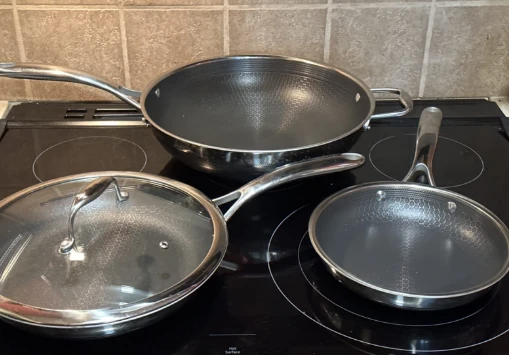
All HexClad Hybrid cookware sets are induction compatible as well; but we can’t say the same for GreenPan cookware. As per our research, only GreenPan CHATHAM, Performance Pro, Omega, Five Two by GreenPan, Venice Pro, GP5, Reserve, Treviso, Levels, Mayflower, Mertan, and Storck are induction safe. Cookware collections besides these can’t be used on an induction cooktop.
Price
The HexClad brand is way too expensive in contrast to GreenPan. Even one 8-inch pan of HexClad can cost you more than $100. Now, the question that comes to mind is, is HexClad cookware worthy of this price? The answer is YES!
If you want to invest in kitchen cookware for the long term, HexClad is the best option. In case you don’t have a big budget, you can go with GreenPan cookware; their cookware sets are also good in quality.
GreenPan vs HexClad – Which Is Better?
So which brand is better between HexClad and GreenPan? I don’t think any of the brands between these two are bad; they’ve their pros and cons. For example, if you want an aesthetic, modern look and colorful cookware in your kitchen, GreenPan is the best choice for you.
The cookware of GreenPan is good in performance, the price is affordable, and the variety in material, colors, and cookware collection is huge.
Nevertheless, HexClad is the right choice for those who want superior quality cookware, and they have a good budget as well. This is because HexClad is an expensive brand, but it has many features that make the cookware exceptional in quality. That’s the reason celebrity chefs like Gordon Ramsay use HexClad pans and pots.
Read More:
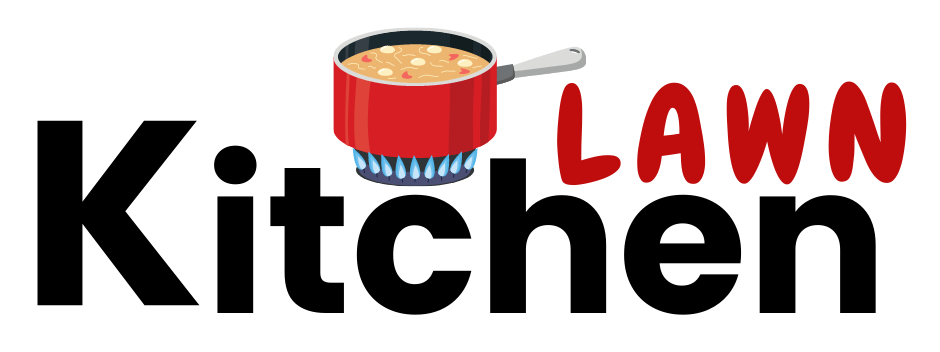

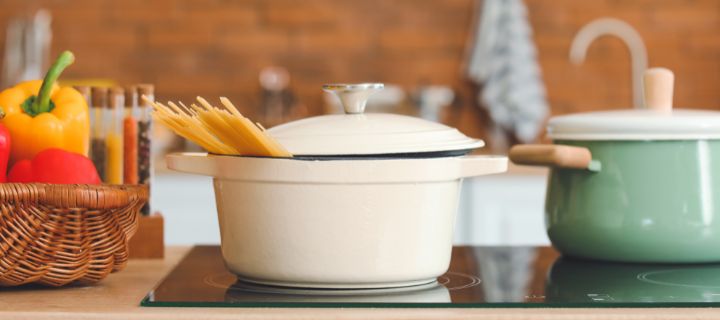



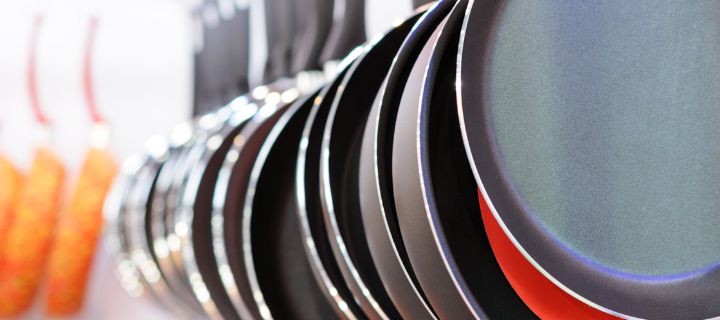
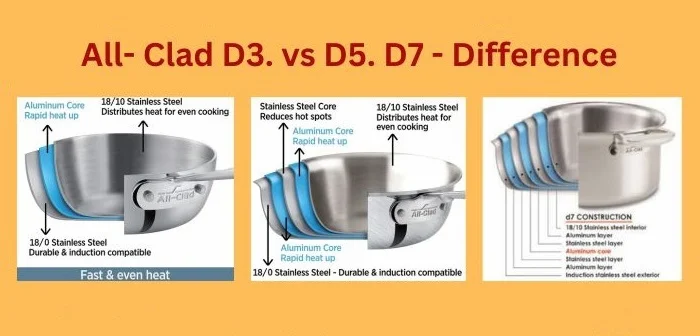
2 Comments
Comments are closed.